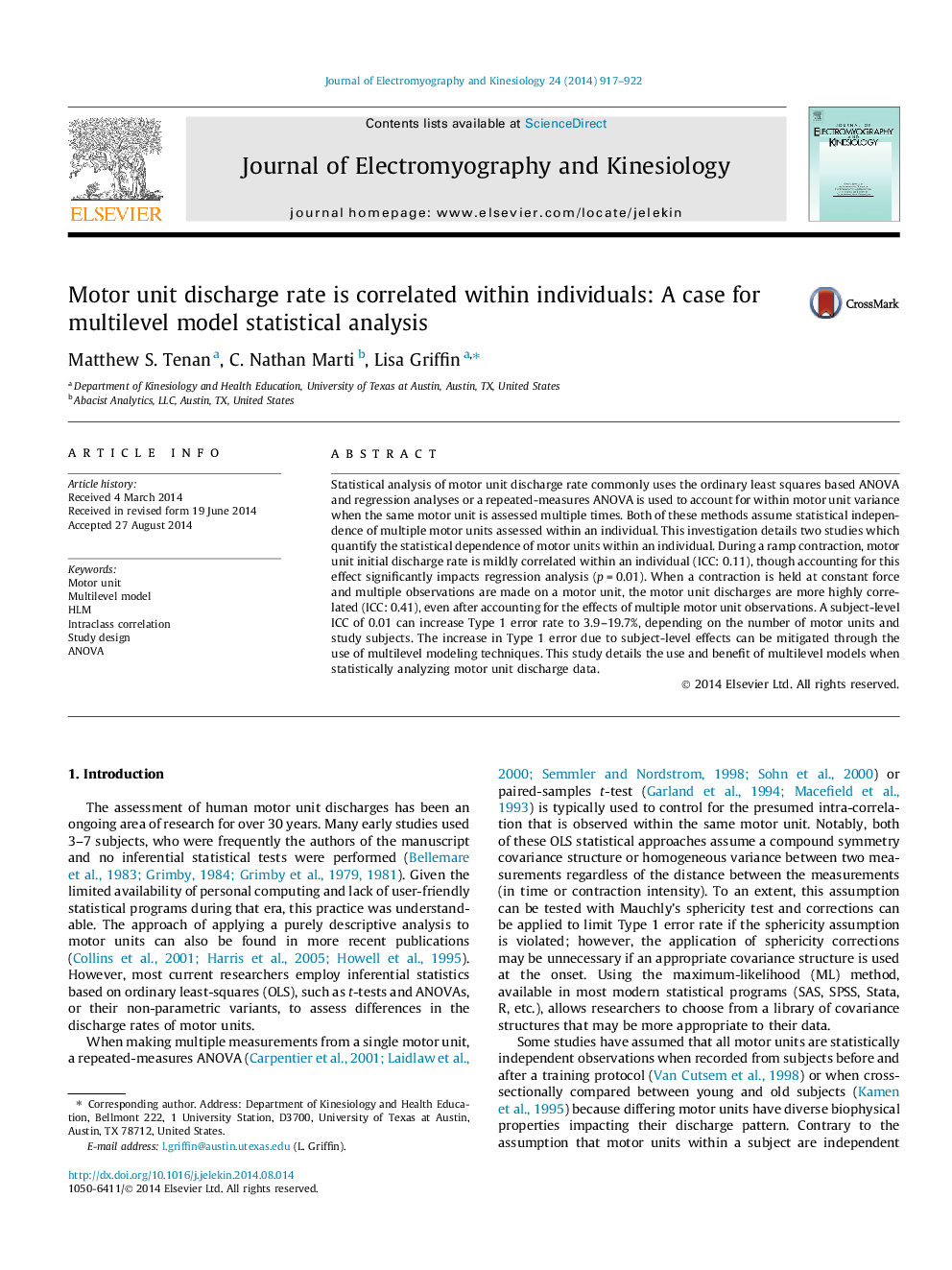| Article ID | Journal | Published Year | Pages | File Type |
|---|---|---|---|---|
| 4064473 | Journal of Electromyography and Kinesiology | 2014 | 6 Pages |
Statistical analysis of motor unit discharge rate commonly uses the ordinary least squares based ANOVA and regression analyses or a repeated-measures ANOVA is used to account for within motor unit variance when the same motor unit is assessed multiple times. Both of these methods assume statistical independence of multiple motor units assessed within an individual. This investigation details two studies which quantify the statistical dependence of motor units within an individual. During a ramp contraction, motor unit initial discharge rate is mildly correlated within an individual (ICC: 0.11), though accounting for this effect significantly impacts regression analysis (p = 0.01). When a contraction is held at constant force and multiple observations are made on a motor unit, the motor unit discharges are more highly correlated (ICC: 0.41), even after accounting for the effects of multiple motor unit observations. A subject-level ICC of 0.01 can increase Type 1 error rate to 3.9–19.7%, depending on the number of motor units and study subjects. The increase in Type 1 error due to subject-level effects can be mitigated through the use of multilevel modeling techniques. This study details the use and benefit of multilevel models when statistically analyzing motor unit discharge data.
